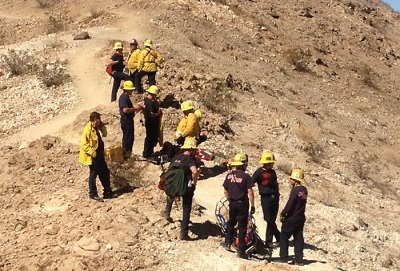P-DAS
I recently went for a mountainside run in the desert on a hot afternoon, which I would not advise. I’d already assisted a heat-distressed hiker off this trail once before. On the afternoon at hand, the heat-exhausted hiker did not make it off the trail.
She collapsed a half-mile out. By the time I arrived, several fire trucks, police and paramedic units were on the scene. At least a dozen personnel in full uniform carried gear up to the stricken hiker, only to call in a helicopter.
Trail rescues here are relatively commonplace. Figures are not immediately available on how much it costs the municipality, but I, for one, cannot afford to rent a helicopter, even on a nearly never basis. I wondered why there wasn’t a level of assistance between “hiking partner help” and “helicopter”—a Pre-Distress Alert System, if you will.

P-DAS would be a localized network for trail enthusiasts who may need assistance, but not necessarily emergency services. P-DAS would entail a free, downloadable iOS/Android app that distressed hikers could use to notify a volunteer network of their location and need for water or other basic assistance.
The app would tie to a GPS API for smartphones that in turn posts to a localized website designed to send text alerts to active volunteers. Local TV stations could also post P-DAS activations on websites or run them as community service notifications. P-DAS might also be incorporated into specialized unlicensed devices that work in the TV band in order to provide reach into areas where cell service may not be available.
The hiker I saw was clearly in need of emergency services, but if there were a predistress system, perhaps she wouldn’t have tried to make it down the trail on her own to the point of heat exhaustion.
It’s worth considering.
The professional video industry's #1 source for news, trends and product and tech information. Sign up below.
